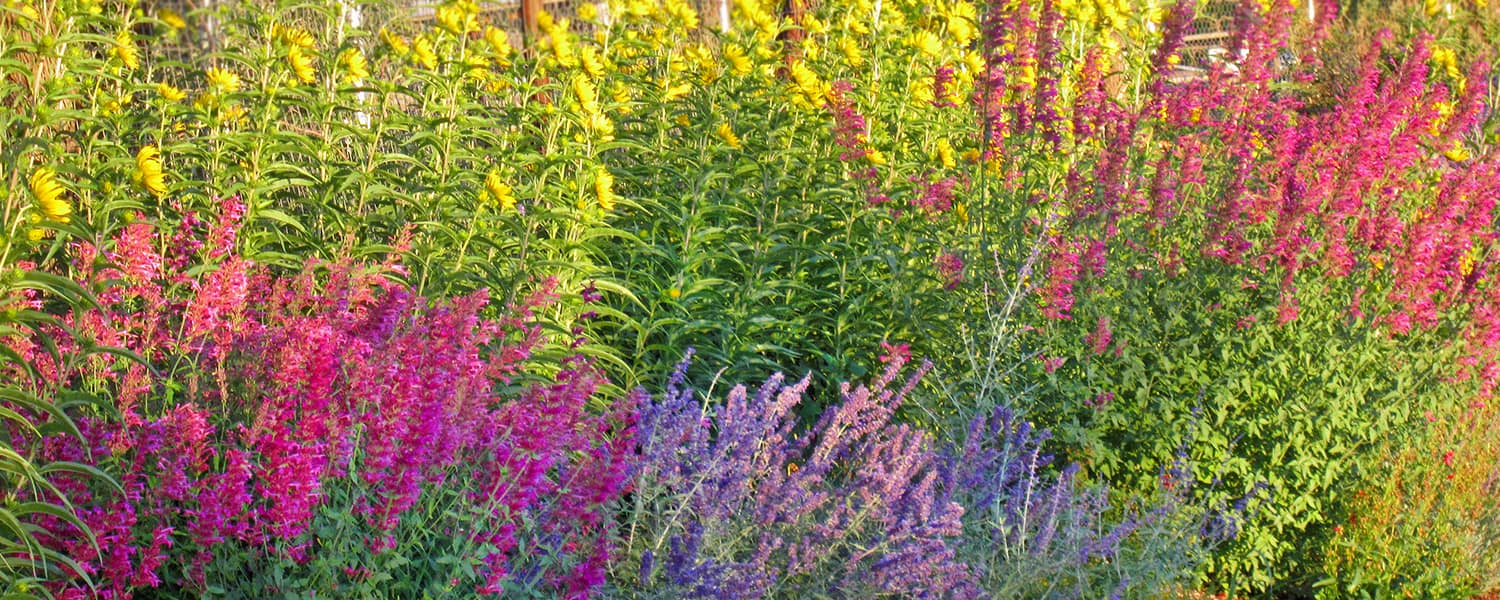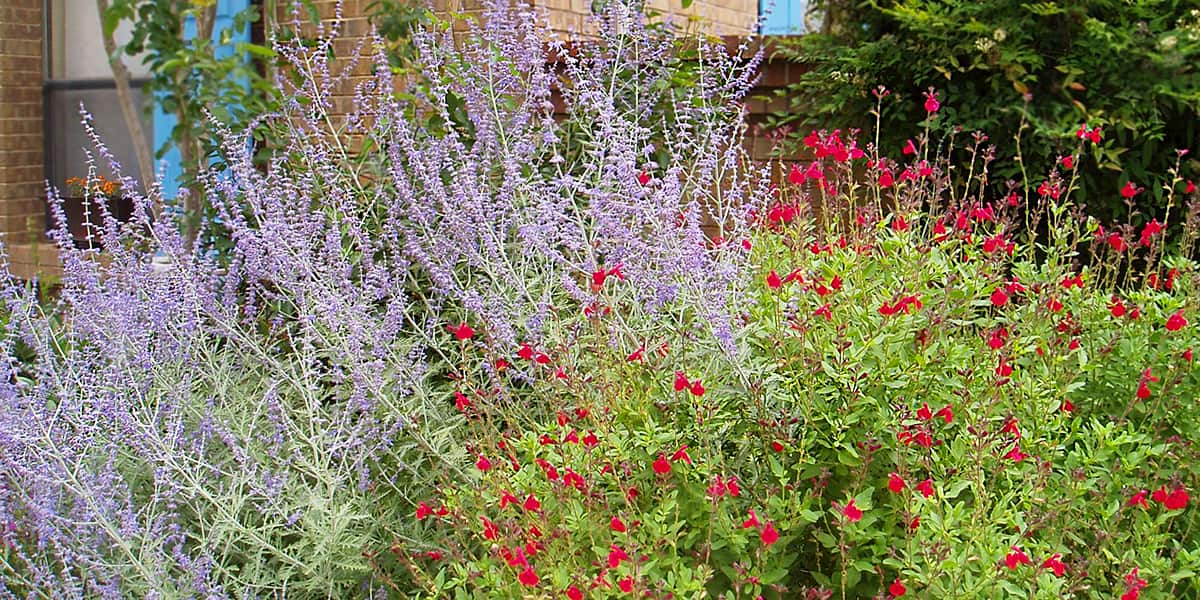
The Tall Grandeur Of The Late Season Garden: Favorite Plants For Fall Color
By David Salman, Chief Horticulturalist and Founder of High Country Gardens
Many folks think of spring as the peak color season in their gardens. It’s often easy to “front load” the garden with spring-flowering plants because that’s the time of the year when gardeners are visiting their local garden centers in search of plants.
However, as the growing season stretches into summer, many gardens become very green with few flowers in sight -- that does not have to be the case! Late summer and early fall gardens can have just as much color - if not more - as the spring garden, and even taller.
I always advise my fellow gardeners to get out into their gardens in late July and August to have a thoughtful look around. Take a notepad and write down your observations about where you could use more color, and decide what colors would look best. Consider our pollinators - the bees, butterflies, and hummingbirds that feast in spring also need to feed through the fall months in preparation for winter. Our gardens can make a huge difference.
Many spring flowering perennials and perennial bulbs tend to be short and medium sized plants, whereas summer and early fall blooming perennials have had many months of growth before their flowers appear. Hence the tall grandeur of late season blooming perennials. Many out-of-town visitors are stunned to see my New Mexico gardens in September. They had no idea that there are so many wonderful flowering perennials that wait until the end of the growing season to bloom. As an added bonus, most of these perennials are nectar sources for hummingbirds, so my gardens are full of these tiny sparkling birds.
Top 11 Favorite Plants For Late Season Color
- Purple Coneflowers (Echinacea) – favorite nectar source for bumblebees and butterflies. Native.
- Reblooming English Lavender (Lavandula angustifolia) – nectar for bees and fragrance for people. These include ‘Buena Vista’, ‘Sharon Roberts’ and ‘Pastor’s Pride’
- Goldenrod (Solidago) – fantastic for butterflies and bees. These include ‘Fireworks’, ‘Golden Fleece’ and ‘Peter Pan’. Native.
- Agastache (Hummingbird Mint, Hyssop) – showy, fragrant, long-blooming perennials that are essential for a pollinator-friendly garden. ‘Blue Fortune’ (best for Midwest and East Coast), ‘Ava’, ‘Rosita’, ‘Desert Solstice’ and Agastache rupestris. Both Native and Old World varieties available.
- Salvia (Sage) – there are some many and all of them feed the hummingbirds. My favorites include ‘Furmans Red’, Salvia reptans, ‘Ultra Violet,’ and 'Blue Flame' or 'Mulberry Flambe' (Salvia pachyphylla - for western gardens only). Both Native and Old World varieties available.
- Hummingbird Trumpet (Zauschneria) – spectacular orange flowers, rich with nectar that hummingbirds feast on. Native.
- Russian Sage (Perovskia) – gorgeous smoky blue flowers. A favorite of honeybees and bumblebees.
- Maximilian’s Sunflower (Helianthus) – Towers of flowers in late summer and early fall. Native.
- Hardy Plumbago (Ceratostigma) – gorgeous blue flowers and burgundy fall foliage and a long-time favorite of High Country Garden customers! Old World.
- Ornamental Grasses (Calamogrostis, Sporobolus, Muhlenbergia, Bouteloua) – all wonderful for fall and winter interest with their ornamental seed heads. ‘Blonde Ambition’ is one of the most unusual and spectacular.
- Asters (Symphyotrichum) – available in many heights and forms, Asters can be used in rock gardens, wildflower gardens, or perennial borders, easy to grow and some of the last flowers blooming in the fall.
Shop Our Favorite Plants For Late Season Color
The Legacy of David Salman | High Country Gardens founder David Salman was a pioneer of waterwise gardening, a passionate plant explorer, and a charismatic storyteller. His commitment to cultivating a palette of beautiful waterwise plants transformed gardening in the American West.


